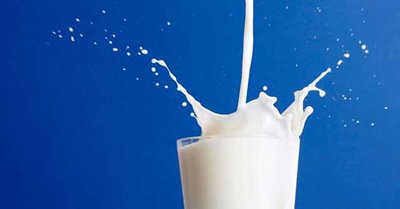The crumbling truth about osteoporosis

This rapidly growing disease not only affects the elderly worldwide, but younger generations too. This bone-weakening disease, known as the ‘silent epidemic’, is however possible to control and even prevent. It all begins with you….
Understanding bone development
Bone development lives up to the saying “out with the old and in with the new”. Our bodies follow a continuous cycle of ‘remodelling’ the bone - old minerals are removed and replaced with new minerals deposited as bone on a constant basis. It is vital that this cycle remains as balanced as possible because it can be disrupted by many factors. It can be compared with allowing the one phase of a house foundation to set before continuing with the next phase.
What is osteoporosis?
Osteoporosis is the deterioration of bone quality and density to the extent that the spine, hip and wrist bones become extremely weak and brittle. This can result in bones fractures and breaks. Osteoporosis reduces the quality of life and can be associated with severe outcomes such as death.
Up until your mid-twenties, your body focuses more on laying down the new bone minerals, creating a firm foundation for the years of life to come. It’s therefore important to emphasize a healthy lifestyle in teenagers, particularly teenage girls. Extreme dieting can be very detrimental.
From the age of 40, bone tissue can degrade or ‘break down’ resulting in the gradual loss of bone minerals- all of which is part of a normal cycle. Following healthy lifestyle guidelines can help maintain bone integrity and prevent excess loss.
There are two fundamental factors which will determine the severity and onset of osteoporosis:
-
The bone strength and quality at its peak in the adolescent years,
-
How quickly the bone starts to deteriorate.
Other risks include:
-
Genetics – Osteoporosis can be passed from one family member to another.
-
Age - The risk of osteoporosis increases with age, especially after the age of 40.
-
Gender - Women have a higher risk of developing osteoporosis than men, mainly due to the loss of the hormone oestrogen during menopause women
-
Ethnicity - Osteoporosis is more common amongst Asian and Caucasian people because of bone structure differences when compared to other race groups.
-
Alcohol - Drinking more than two drinks per day can affect the bone mineral density (and therefore strength) as a result of the toxic effect alcohol has on the bone forming cells.
-
Smoking – Has a negative effect on bone density. The younger you are when you start smoking, the higher the risk of having a low peak bone mass which will result in an earlier onset of osteoporosis.
-
Poor Nutrition: Low dietary calcium – The mineral Calcium is critical in bone formation and maintenance. A diet that lacks calcium will result in the body using the calcium that is stored in our bones, for other functional uses, and this will speed up the process of osteoporosis.
-
Eating disorders - Anorexia and bulimia are one of the factors that lead to poor nutrition and calcium deficiency which reduces the healthy build-up of bone minerals.
-
Vitamin D deficiency - helps with calcium absorption so without vitamin D your body won’t absorb enough Calcium to ensure bone maintenance
-
Insufficient exercise – Exercise helps to increase bone strength. Walking and doing ‘weight-bearing’ exercises such as light weights will help strengthen bones and decrease the chance of early-onset osteoporosis.
-
Frequent fall’s - Falling increases the chance of fractures. This is more common in the elderly or people who are taking sedative medication, have poor eye sight or weak muscle tone.
What can you do to prevent this disease?
-
Avoid binge and excessive drinking.
-
Don’t smoke or try to cut down and stop.
-
Some time in the sun is beneficial – this helps formation of Vitamin D which contributes to bone health - this time can include driving or sitting near a window in your office. Remember: always protect your skin from harmful sun rays, and use a hat and sunscreen.
-
If you are prone to falling often, find out why this is happening so you can then begin to resolve this problem.
-
Go for a bone density test once you have reached menopause, or upon recommendation by your Doctor
-
Maintain a healthy lifestyle by following the food based Healthy Eating dietary guidelines for South Africans:
*The above information has been adapted from information by the International Osteoporosis Foundation.